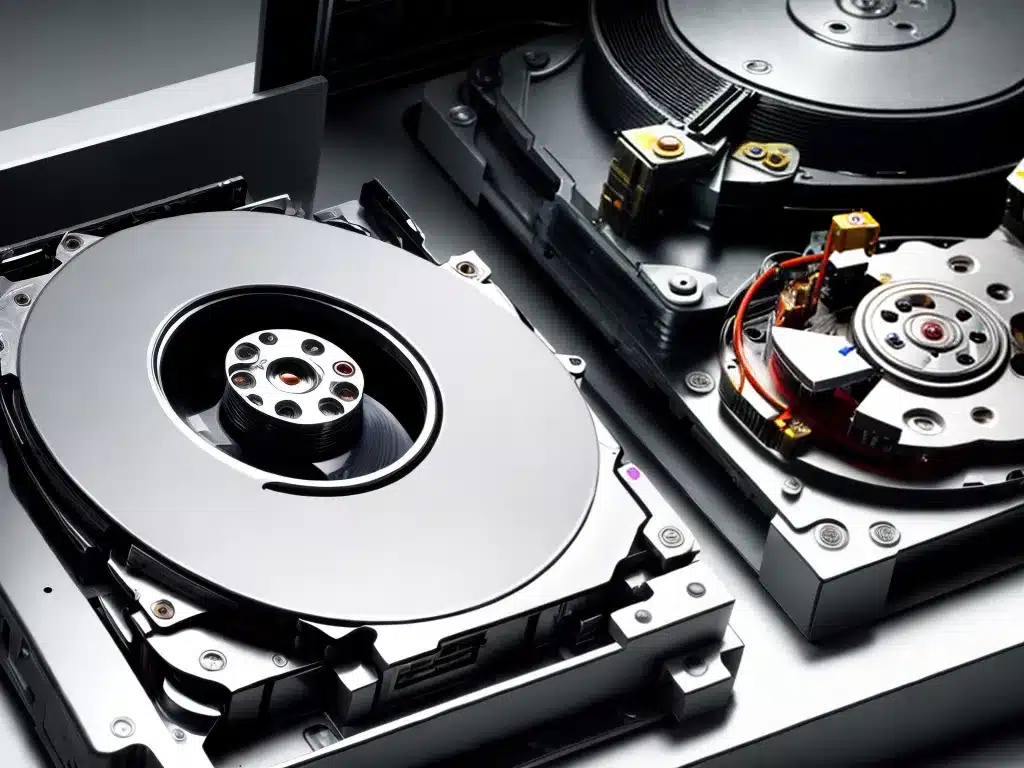
In 2024, it is still possible to recover data from a dead floppy disk drive, but it can be challenging. As floppy disks have become obsolete, the availability of floppy disk drives and specialized data recovery services has declined. However, with some technical skills and the right equipment, data recovery is still feasible in many cases.
Assessing the Condition of the Floppy Drive
The first step is to determine why the floppy drive is not working. Common failure modes include:
-
Mechanical problems – the stepper motor or head assembly is damaged and prevents the disk from spinning or the head from moving.
-
Electronic failures – the drive’s controller board, logic chips, or other components have failed.
-
Alignment issues – the head no longer aligns correctly over the disk surface due to mechanical wear.
-
Dirt or debris – particles inside the drive mechanism prevent proper operation.
Depending on the failure mode, some may be easier to repair than others. Mechanical problems in particular can make data recovery very difficult.
Obtaining Compatible Replacement Parts
To repair a damaged floppy drive, replacement parts are needed. Locating compatible parts can be challenging in 2024 as floppy drives disappear. Some options:
-
Used surplus equipment dealers – may have old stock of floppy drives and parts.
-
eBay or other online marketplaces – individuals may sell old floppy drives and components.
-
Specialized electronics salvagers – may have floppy drives from recycling old systems.
For uncommon drive types, parts may be hard to find. Having a model number or other identifying details will assist the search.
Repairing the Original Floppy Drive
If the problem is relatively minor such as dirt, alignment issues, or a failed controller chip, repairing the original drive may be possible. Steps can include:
-
Disassembling the drive to access internal components. This requires small screwdrivers and mechanical aptitude.
-
Cleaning the heads, rails, and other components to remove debris. Isopropyl alcohol works well.
-
Re-aligning the heads using shims or mechanical adjustments if needed.
-
Replacing the controller board or other electronics if faulty.
-
Re-assembling the drive and testing with known-good disks.
With specialized skills and a steady hand, many drives can be returned to functional condition this way.
Using Another Floppy Drive
If repairing the original drive is not feasible, using another working floppy drive is an option. This requires finding a compatible drive model that can read the disk format.
Steps include:
-
Obtaining a working drive through surplus sources. The same model as the dead drive is ideal.
-
Installing the drive into a computer through its floppy controller interface.
-
Configuring the BIOS and operating system to recognize the new drive.
-
Inserting the floppy disk to attempt accessing the data.
With the proper drive, recovery may be straightforward. But some disk formats are proprietary and require the same model drive.
Using Specialized Data Recovery Services
For difficult cases where DIY repairs or drive swaps are unsuccessful, professional data recovery services can sometimes retrieve the data. They have capabilities like:
-
Advanced clean room facilities to safely open drives without contamination.
-
Specialized tools and custom electronics to repair or work around drive issues.
-
Proprietary techniques to read unreadable media.
-
Expertise recovering data from obsolete and damaged devices.
However, fees are high starting at several hundred dollars. The value of the lost data must justify the expense.
Coping with Unrecoverable Drives
In some unfortunate situations, recovering data from a damaged floppy disk is simply impossible. Technical limitations can include:
-
Extreme physical damage to the media.
-
Proprietary disk formats.
-
Encryption.
-
Degraded magnetic charges.
When data loss is permanent, all that can be done is to learn from the experience, reinforce good backup practices, and move forward. As a last resort, recreating lost data manually may be an option if feasible. But ultimately, floppies do not last forever.
In summary, recovering data from a dead floppy disk drive in 2024 is difficult but possible in many cases with effort and technical skills. However, as floppy drives disappear, options for repair and recovery will continue to dwindle. Maintaining good backups of important data on other media is highly advisable. With preparation and care, irreplaceable data can be preserved and protected.












